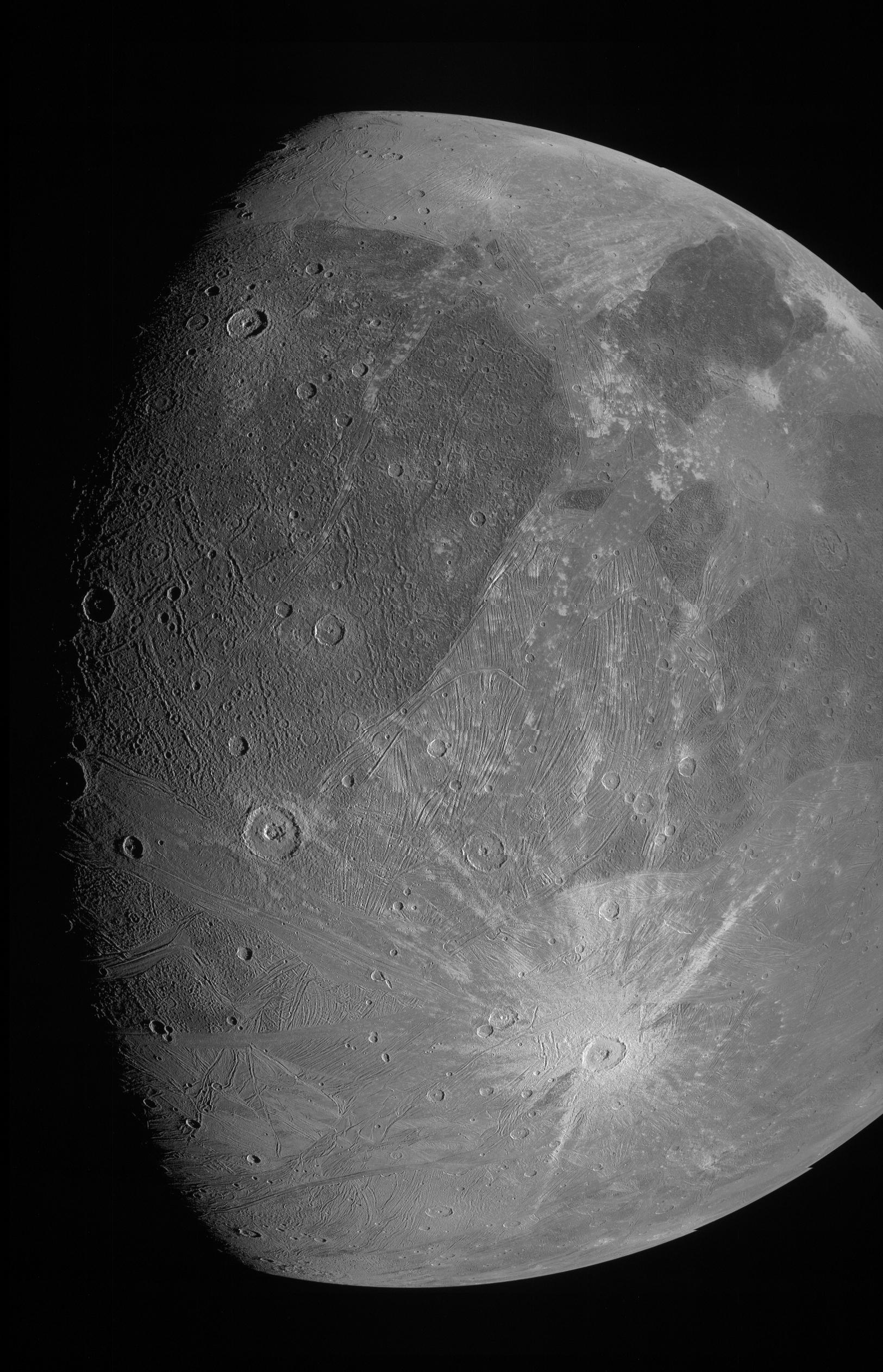This is the first new close-up picture of Jupiter’s moon Ganymede in more than 20 years
NASA's probe Juno flew by Ganymede on June 7, making it the closest any probe has come to the moon since Galileo in 2000.

NASA has just released the first pictures of Jupiter’s largest moon, Ganymede, taken during a flyby by the Juno probe.
Juno passed Ganymede on June 7, making its closest approach at just around 1,000 kilometers from its surface while traveling at 66,800 kilometers per hour. It’s the closest any probe has come to the moon since Galileo in 2000. The image above was taken by the JunoCam, capturing nearly a whole side of Ganymede at a resolution of 1 km per pixel. Another image released was taken by the Stellar Reference Unit, showing off a portion of the moon’s dark side that was lighted by Jupiter itself. More images will be made available in the coming days.
Ganymede is of particular interest to scientists for a number of reasons. It has a metallic core, and is the only moon in the solar system to have its own magnetic field (though this gets pretty well buried by the magnetic field generated by the behemoth Jupiter).
Beneath its icy surface is thought to be a subsurface ocean that contains more water than all of Earth’s oceans combined. Its atmosphere is super thin and it’s pretty unlikely Ganymede could be host to any life, but habitability is not entirely out of the question.
Meanwhile, Juno is having a ball at the moment. The probe first arrived at Jupiter in August 2016 to explore the largest planet in the solar system. Juno’s hardware was specially designed to help protect it from the extreme radiation belts created by Jupiter.
In January, Juno began an extended mission that began with this flyby of Ganymede. Its next target is Europa in 2022, followed by two flybys of Io in 2024. After that, Juno will dive headfirst into Jupiter to formally finish its mission in September 2025.
Deep Dive
Space
How to safely watch and photograph the total solar eclipse
The solar eclipse this Monday, April 8, will be visible to millions. Here’s how to make the most of your experience.
How scientists are using quantum squeezing to push the limits of their sensors
Fuzziness may rule the quantum realm, but it can be manipulated to our advantage.
The great commercial takeover of low Earth orbit
Axiom Space and other companies are betting they can build private structures to replace the International Space Station.
Stay connected
Get the latest updates from
MIT Technology Review
Discover special offers, top stories, upcoming events, and more.